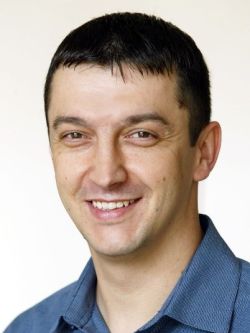Event Date/Time
Location
room 222
Series/Event Type
Semiconductor quantum cascade laser frequency combs (QCL-FCs) have recently shown tremendous potential as spectroscopic sources. By simultaneously providing relatively broadband spectral coverage and narrow linewidths in the mid-IR and THz spectral region, they enable detection of chemicals with broadband absorption spectra and high-spectral resolution spectroscopy of gas molecules. Such semiconductor laser comb sources show unique potential for integration into lab-on-chip systems and into transportable/portable sensing systems for field applications.
I will present a dual-comb spectroscopy (DCS) technique that has been implemented to perform spectroscopic sensing with QCL combs. DCS provides nearly-instantaneous access to optical information across the entire spectral bandwidth provided by the comb sources, which drastically reduces the required acquisition time per spectra. In order to enable reliable DCS with QCL-FCs we utilize high-speed phase and timing correction algorithms to allow for computational coherent averaging. Prototype spectroscopic systems based on this technology for in-situ detection of chemical vapors as well as remote detection and localization of chemical plumes have been enabled by the quantum cascade laser frequency combs.
In this talk I will present DCS systems based on semiconductor sources operating in the mid-IR (up to ~10mm) and THz (~3THz) that are used to perform spectroscopy of gases and hyperspectral imaging of solids. Examples of fast DCS with temporal resolution down to 10ms/spectrum as well as future directions towards integrated photonics DCS systems will be discussed.
Speaker Bio
